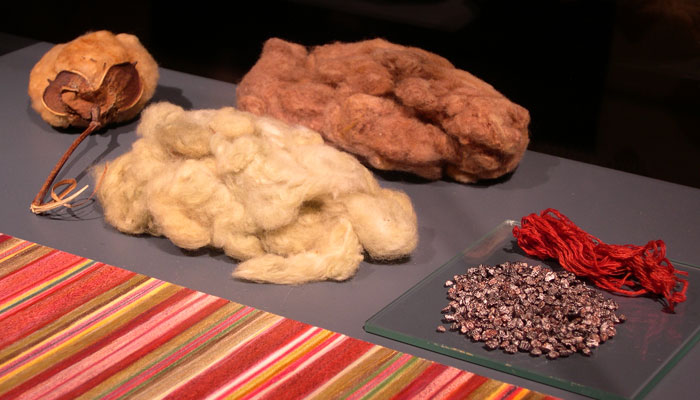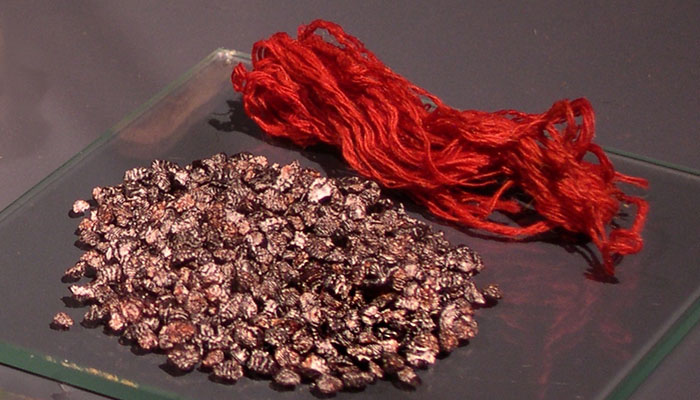Chimu, Labyrinths of a sacred costume
Fibers, threads & dyes
Cotton (Gossypium barbadense) was used to prepare light, delicate cloth, as well as for making the grounds for larger and more resistant textiles. Weavers used camelid fiber to give a weaving greater consistency, but, principally, as the surface on which to display the images of intense polychrome that characterized Chimú textiles. These fibers were easier to dye than cotton and permitted a broader range of colors.
In this costume, the transparent weaving of the ground and the base which supports the flat and volumetric applications are made of cotton. Tapestry weavings, as well as all of the iconographic decorations, are of camelid fiber, possibly that of the alpaca (Lama pacos).
The threads of the warp of the costume’s ground are composed of two strands in Z, while the threads of the weft are very thin, just one strand twisted in S. The majority of those made of camelid fiber are of thin threads composed of two strands and twisted in S.
The cotton thread is of natural light coffee color, while the camelid fibers were dyed with pigments of animal, mineral, or vegetable origin. The Chimú worked with 20 different tones of color, some with different shades. The tunic has the most chromatic variety, with red as the predominant color. The origin of many of the dyes is not known, although we do know that one of the reds comes from the cochinilla insect.
Andean cotton
The Gossypium barbadense cotton species is native to the Peruvian coast. Because it is easy to grow and matures rapidly, this plant, whose ‘colors’ surprised chroniclers of the Colonial period, still flourishes. Five distinctive hues are grown today: white, light coffee, dark coffee, reddish coffee, and a gray that goes from pinkish to greenish in tone. These varieties continue to form part of the rich traditional textile tradition that has flourished along the north coast since pre-Hispanic times.
Origin of the costume’s red
The small Peruvian cochinilla insect (Dacylopius coccus) is a parasite that thrives on a variety of the tuna cactus (Opuntia Ficus-indica), which grows in arid zones. The female provides a pigment of intense dark red color, which was used as a dye by pre-Hispanic weavers.





































